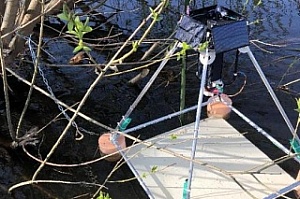TSU staff is developing autonomous devices for remotely determining the number and species composition of malaria vector mosquitoes. A specially trained computer model will recognize them. The need for continuous monitoring of the dangerous insects is not only because of the severity of diseases that mosquitoes can transmit but also the fact that in recent years they have been expanding their range, moving north. Installations for automatic monitoring will significantly expand the abilities of scientists and services responsible for sanitary and epidemiological control, including in countries around the world where hundreds of thousands of people die every year from malaria.
- In the Tomsk Region, there are several types of malaria vector mosquitoes. Compared with the southern regions, the diversity of these insects in Siberia is less, but in recent years there has been a steady tendency to expand their range. The climate is getting warmer, and winters are milder, so species that previously would not have survived in Siberia are now widespread here, - says Gleb Artemov, acting head of the Department of Genetics and Cell Biology.
To monitor the situation and respond in a timely manner to the emergence of new species and pathogens, constant monitoring is necessary. It is often complicated by difficult access to bodies of water where malaria mosquitoes live and breed. Researchers are now developing an autonomous system for monitoring the number of malaria-carrying mosquitoes.
The monitoring system will be located on the surface of the water. The design of the device includes a camera that for shooting the surface of the water in a given mode, will automatically transfer images to the TSU server. According to them, we can estimate the number of larvae of malaria vector mosquitoes that are on the surface, using artificial intelligence (AI). A specially created computer model will be taught to distinguish larvae of the mosquitoes from other objects of an animate and inanimate nature. Machine learning will be carried out on specially selected photo materials, after which they will test on the latest data how much AI has learned the information. According to the scientists, the recognition accuracy should be at least 95%.
- Such an automated system will significantly reduce the cost of field research. - explains Gleb Artemov. - Regular expeditions are necessary to know the dynamics of the number of mosquitoes. If these expeditions are to distant points, then the costs of such an analysis can be very high. Or in other cases, when the purpose of the expedition is to collect as much material as possible, it is necessary to plan a trip at a time when the number is maximum. The new system will reduce risks to a minimum and travel to the facility to a time when the number of malaria mosquitoes is high. Therefore, the system can be used by the sanitary and epidemiological control services to monitor the malarial situation and to respond quickly if necessary.
Such devices may be particularly in demand by African countries, where malaria remains one of the common causes of death. According to the World Health Organization report, in 2018, 228,000,000 people fell ill with malaria all over the world, 405,000 people died. Children under the age of 5 are particularly susceptible to malaria; in 2018, they accounted for 67% (272,000) of all deaths from malaria.

